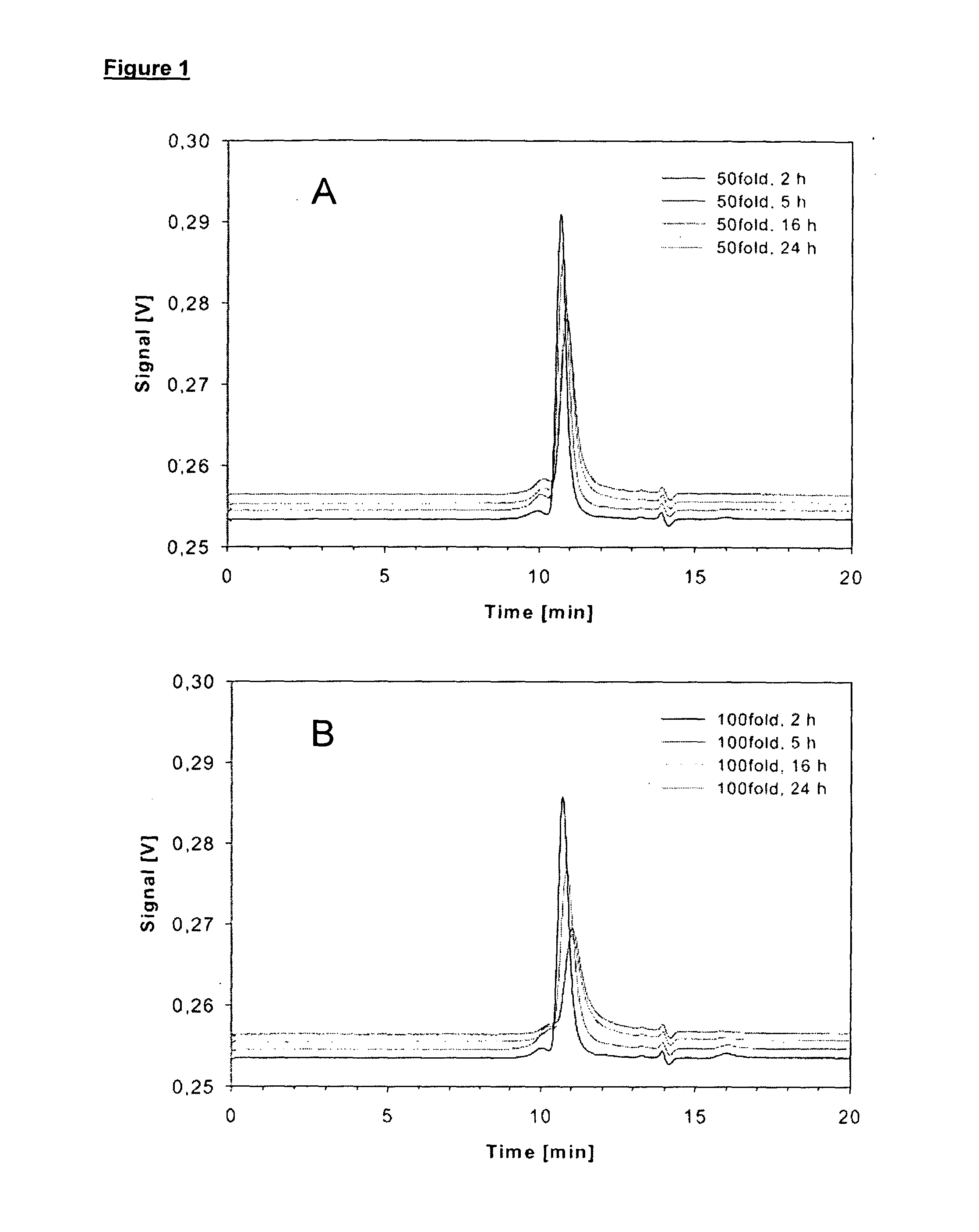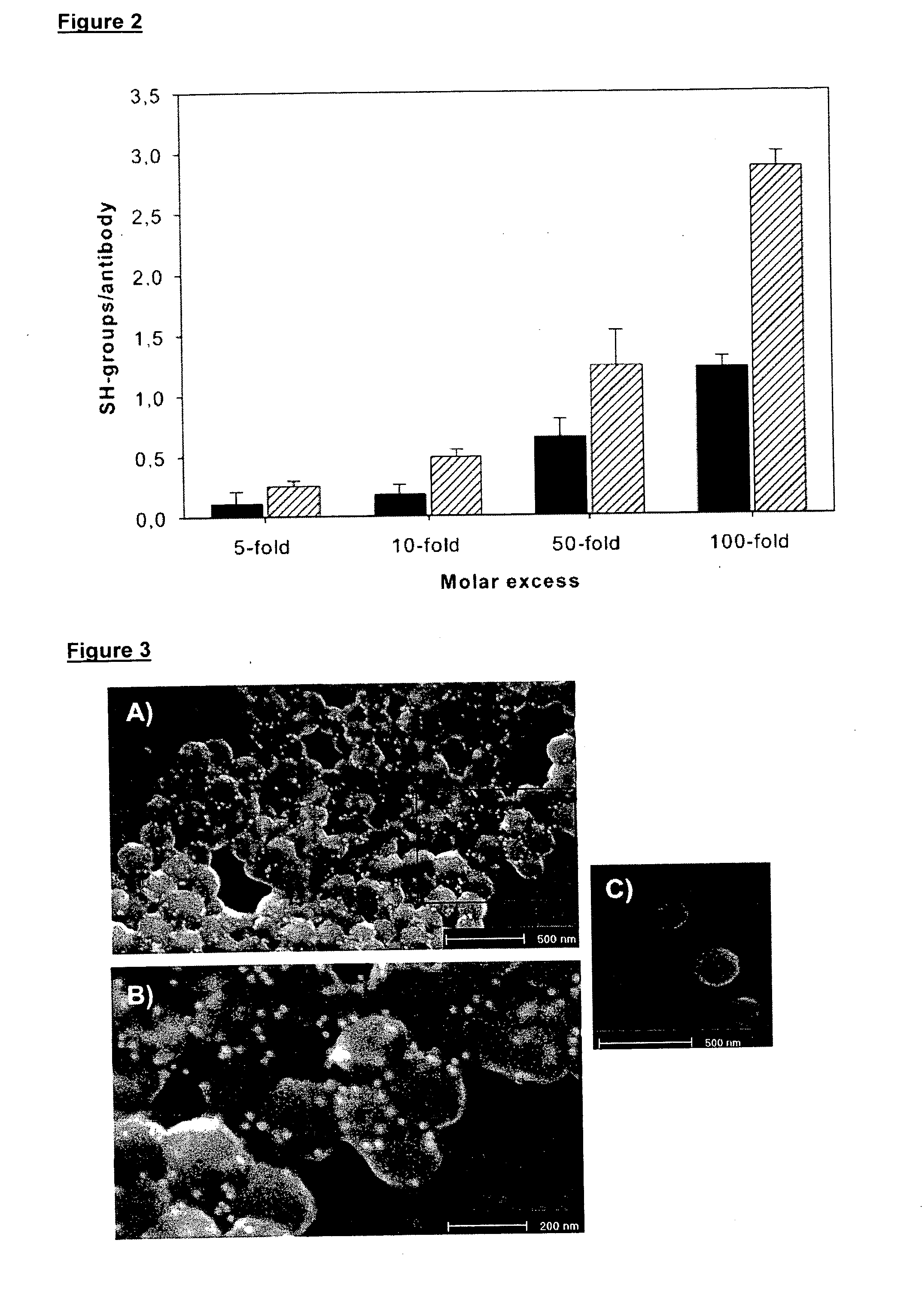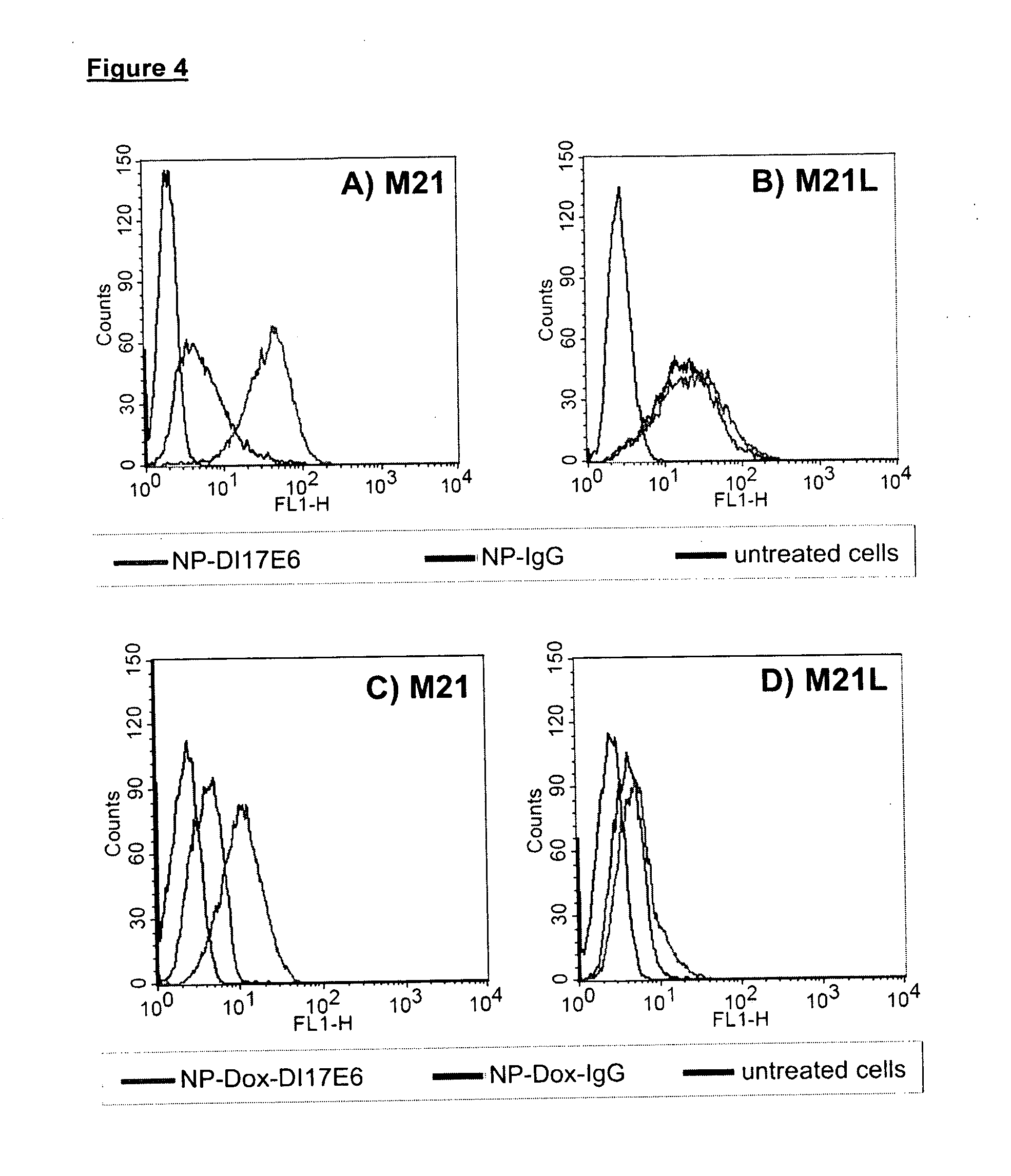Anti integrin antibodies linked to nanoparticles loaded with chemotherapeutic agents
- Summary
- Abstract
- Description
- Claims
- Application Information
AI Technical Summary
Benefits of technology
Problems solved by technology
Method used
Image
Examples
example 1
Nanoparticle Preparation
[0083](1) Reagents and chemicals: Human serum albumin (HSA, fraction V, purity 96-99%), glutaraldehyde 8% aqueous solution and human IgG antibody were obtained from Sigma (Steinheim, Germany). Doxorubicin was obtained from Sicor (Milan, Italy). 2-Iminothiolane (Traut's reagent), 5,5′-dithio-bis(2-nitro-benzoic acid) (Ellman's reagent) and D-Salt™ Dextran Desalting columns were purchased from Pierce (Rockford, USA), hydroxylamine hydrochloride and cysteine hydrochloride×H2O from Fluka (Buchs, Switzerland). DI17E6 was obtained from Merck KGaA, Darmstadt, Germany. The succinimidyl ester of methoxy poly(ethylene glycol) propionic acid with an average molecular weight of 5.0 kDa (mPEG5000-SPA) and the crosslinker poly(ethylene glycol)-α-maleimide-ω-NHS ester with an average molecular weight of 5.0 kDa (NHSPEG5000-Mal) were purchased from Nektar (Huntsville, USA). All reagents were of analytical grade and used as received.
[0084](2) Thiolation of DI17E6: kinetics of...
example 2
Nanoparticle Characterization
[0090]Nanoparticles were analyzed with regard to particle diameter and polydispersity by photon correlation spectroscopy (PCS) using a Malvern Zetasizer 3000HSA (Malvern Instruments Ltd., Malvern, UK). The zetapotential was measured with the same instrument by Laser Doppler microelectrophoresis. Prior to both measurements the samples were diluted with filtered (0.22 μm) purified water. Particle content was determined by microgravimetry. For this purpose 50.0 μl of the nanoparticle suspension was pipetted into an aluminium weighing dish and dried for 2 h at 80° C. After 30 min of storage in an exsiccator the samples were weighed on a micro balance (Sartorius, Germany).
example 3
Proof of Antibody Coupling on Nanoparticle Surface
[0091]Nanoparticles with DI17E6 coupling on surface (NP-DI17E6) and nanoparticles without antibody coupling (NP) were incubated for 1 h at 4° C. with an 18 nm colloidal gold anti-human IgG antibody (dianova, Hamburg, Germany) in PBS. The labeled nanoparticles were fixed with 2% glutaraldehyde in 0.1 M sodium cacodylate buffer, filtered through a Millipore filter (0.22 μm) or Millipore Filter inserts. Then the samples were dehydrated in 30%, 50%, and 100% ethanol, air-dried, coated with carbon in a SCD-030 coater (Balzers, Liechtenstein) and examined in a field emission scanning electron microscope FESEM XL30 (Phillips, USA). An accelerating voltage of 10 kV was used for secondary electron (SE) imaging. For detection of the antibody on the nanoparticle surface the samples were studied using backscattered electron (BSE) modes.
PUM
| Property | Measurement | Unit |
|---|---|---|
| Particle diameter | aaaaa | aaaaa |
| Particle diameter | aaaaa | aaaaa |
| Particle diameter | aaaaa | aaaaa |
Abstract
Description
Claims
Application Information
 Login to View More
Login to View More - R&D
- Intellectual Property
- Life Sciences
- Materials
- Tech Scout
- Unparalleled Data Quality
- Higher Quality Content
- 60% Fewer Hallucinations
Browse by: Latest US Patents, China's latest patents, Technical Efficacy Thesaurus, Application Domain, Technology Topic, Popular Technical Reports.
© 2025 PatSnap. All rights reserved.Legal|Privacy policy|Modern Slavery Act Transparency Statement|Sitemap|About US| Contact US: help@patsnap.com



